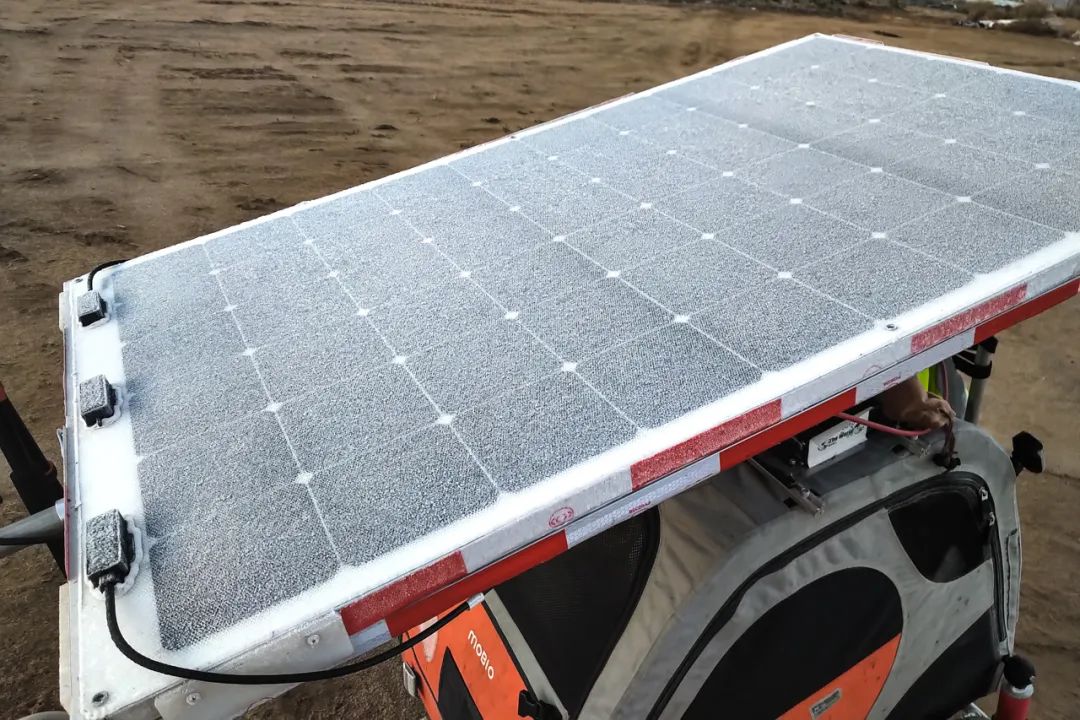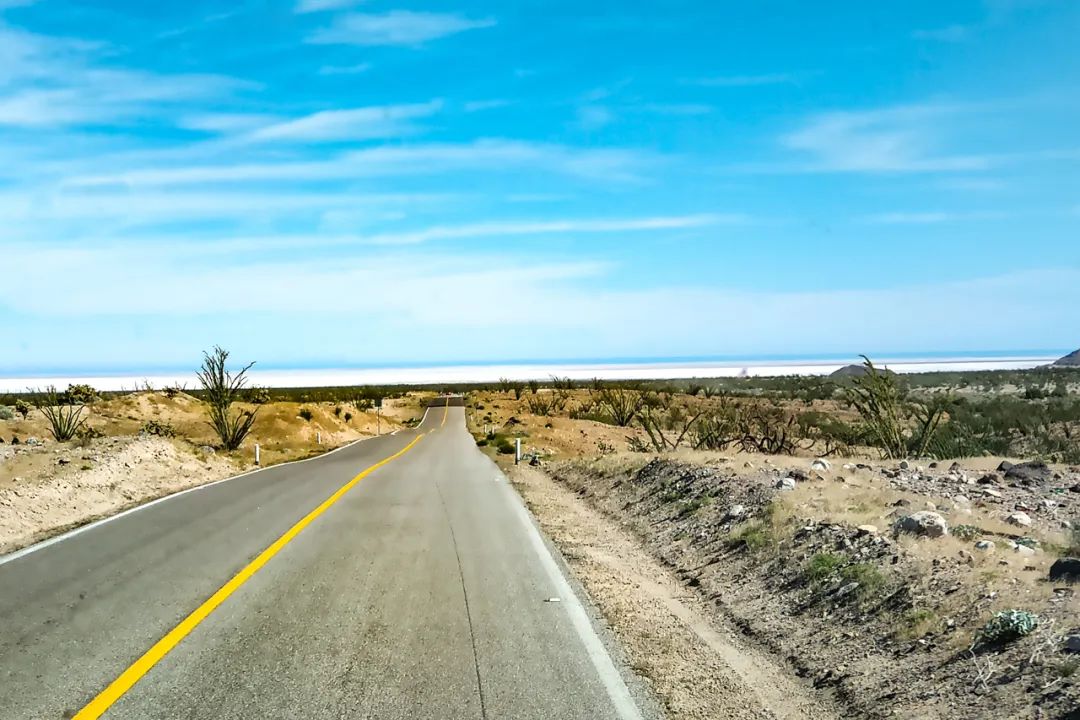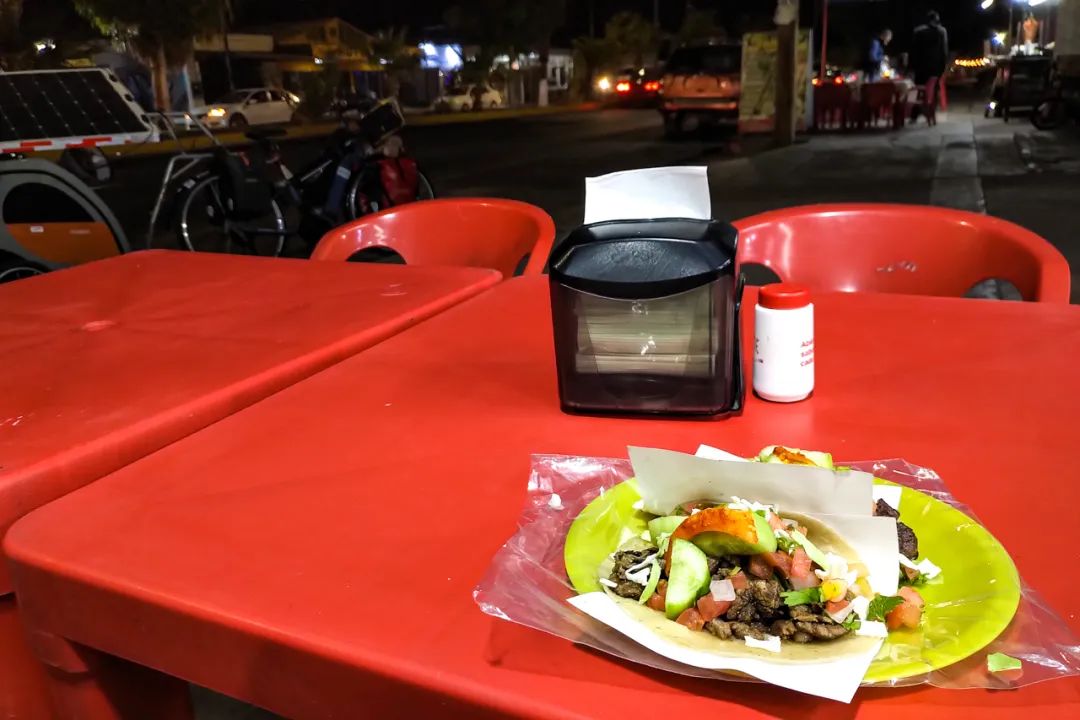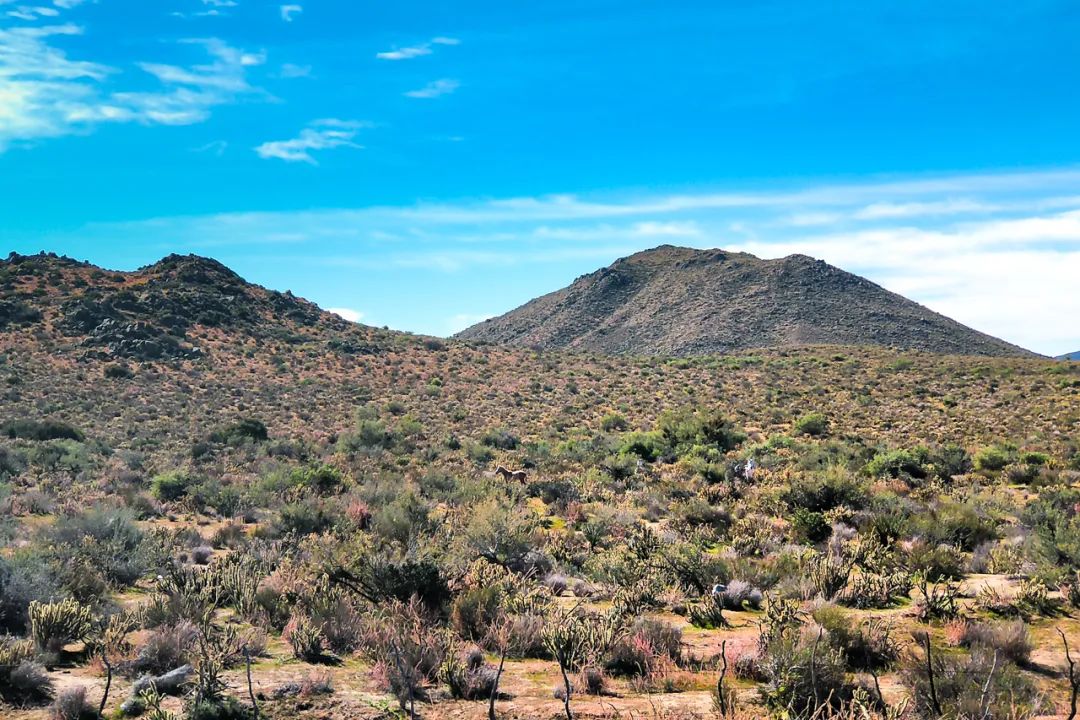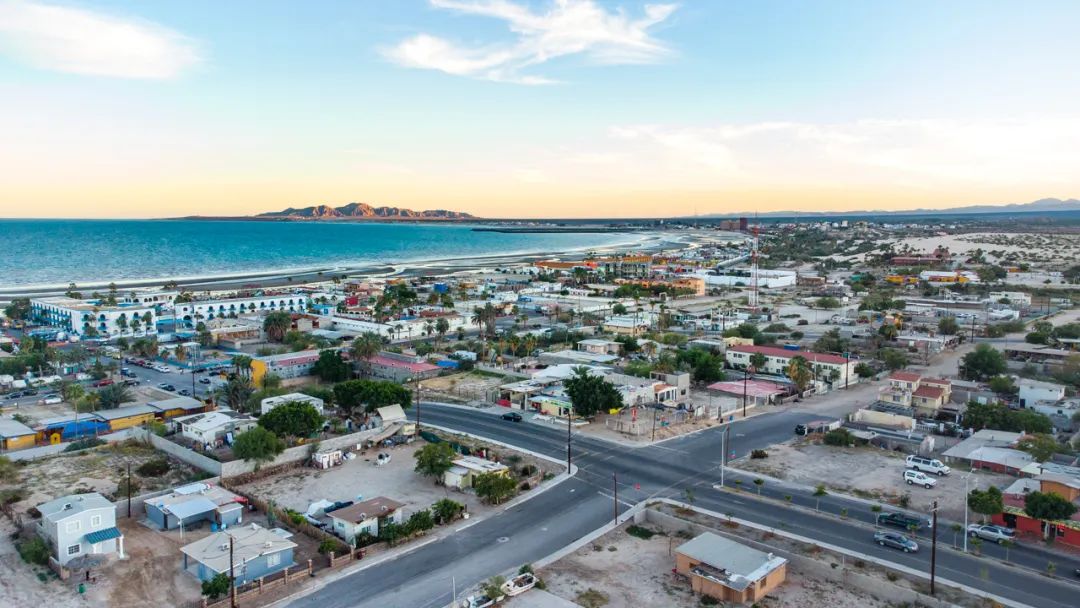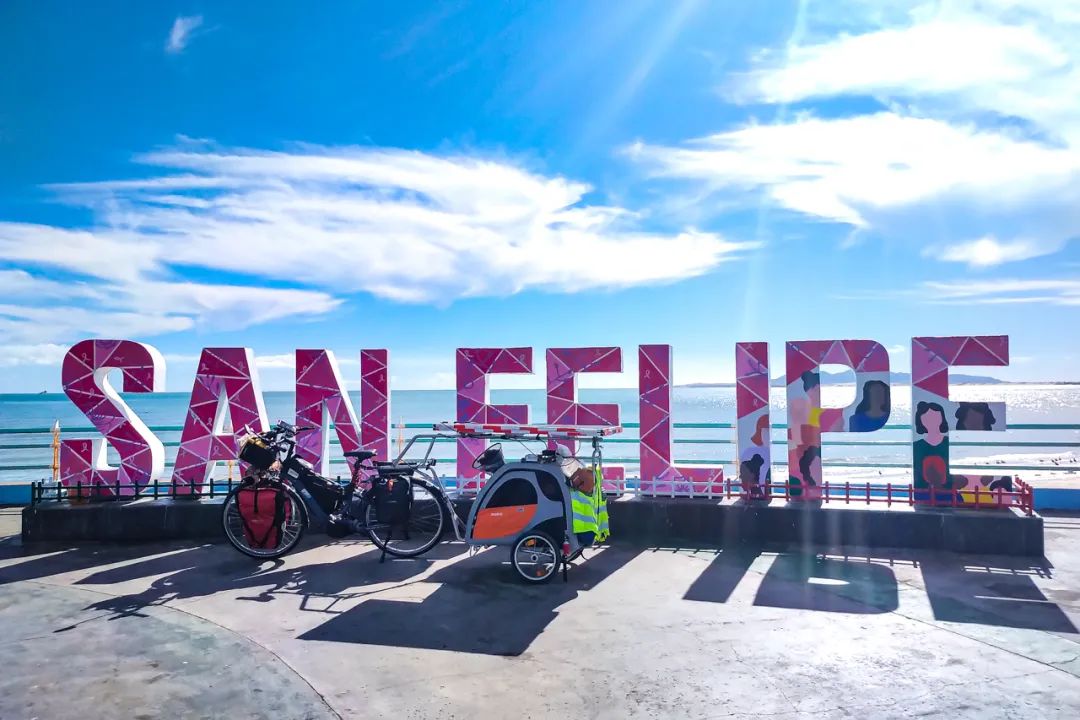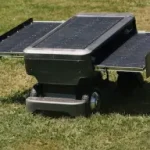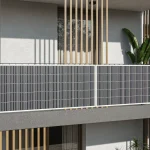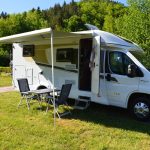First meet the Baja desert and the sea
Today, from Ensanada to the southeast, almost all mountain roads, and rain, I feel tired and cold. The tire of the trailer was also punctured, so I had to fix it in the rain. Difficulties and trials appeared together, although I felt a headache but always have to solve the problem. I mended the tire in the cold wind and put on the bag with a broken hook, and continued to travel, and found a farm to stay before dark.
In the morning, I woke up in the cold and opened my tent to find that it was frosty and the temperature was low to freezing. I packed my bags and continued on, the desert and thorny plants gradually increased, the temperature slowly rose in the middle of the day, and I had to consume up to 5L of water a day, one hill after another, over one summit after another. Just like success is not within reach, sometimes it takes twice as much sweat, even if it’s in pieces, to run to the distance.
We arrived in the small town of Lazaro Cardenas just before dark and set up camp in the park across from the police station, leaving our bikes to charge at the police station. The town was quiet and there were a few kids playing soccer at night. Almost every kid here has a dream about soccer.
Stepping out into the unsigned wilderness, the semi-desert peninsula plateau, I saw cacti everywhere. The vegetation composition of northern California is one of the most interesting and unique in the world. This trip through the desert or mountains, along the Pacific coast and deep into the central interior, is an eye-opener for anyone interested in natural history .
The Sonoran Desert package covers this area with a variety of desert plants and semi-sandy landscapes. Somewhat similar to Arizona in the United States, it is part of the Sonoran Desert, but while Arizona has no sea, this has an ocean and is covered with granite, many ancient volcanic eruptions and traces of major earthquakes.
The California region is a rift zone that separated from the Mexican continent about six million years ago and a transition fault located beneath the Gulf of California. This transition zone divides the Pacific and North American plates, and local seismic records can show the location of faults in this region.
Baja California also shows some traces of recent volcanic activity, and indeed such traces are quite evident: most of the surface exposed rock on the peninsula is volcanic. However there are still two large deep igneous (granitic) rocks consolidated below the surface, one in the Cape and the other in northern Baja California, an extension of the Southern California rock base, but in between the surface rocks are mainly filled by volcanic rocks.
Geological conditions are critical to the formation of the natural landscape, and the different soils produced by the weathering of granite and volcanic rocks result in vast differences in the types of vegetation on the different substrates.
I had a flat tire on my bike and arrived in San Felipe at night, just as the locals were celebrating a shrimp festival, singing from day to night, with the cheerful people, the sun and the sea and the desert giving much joy to the area.



